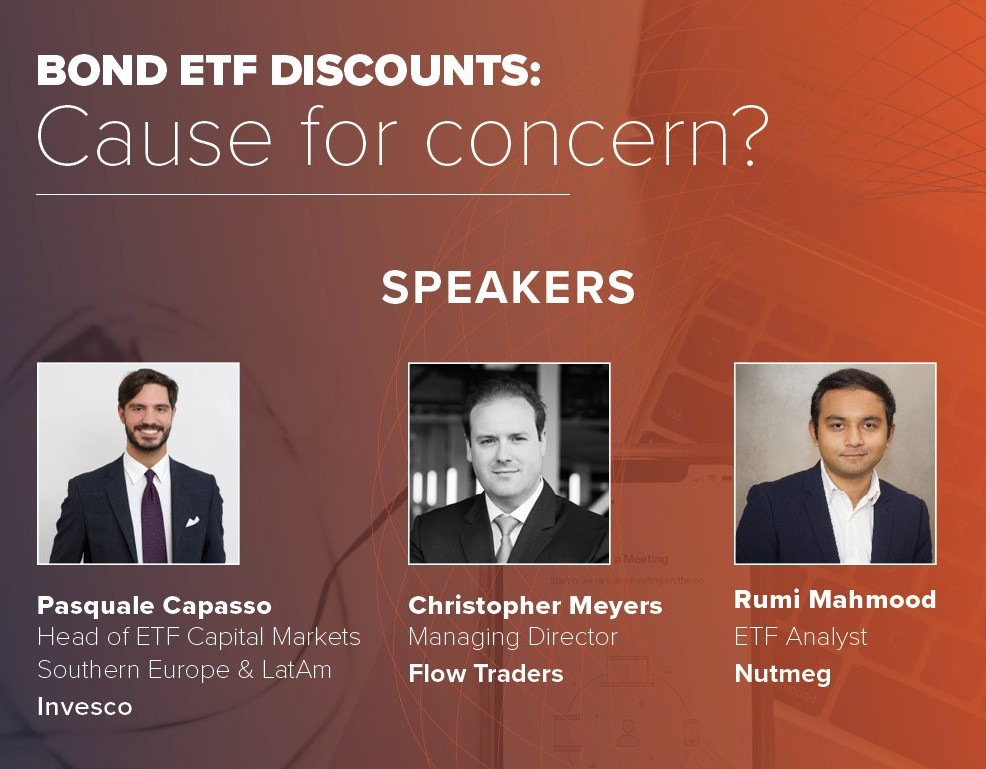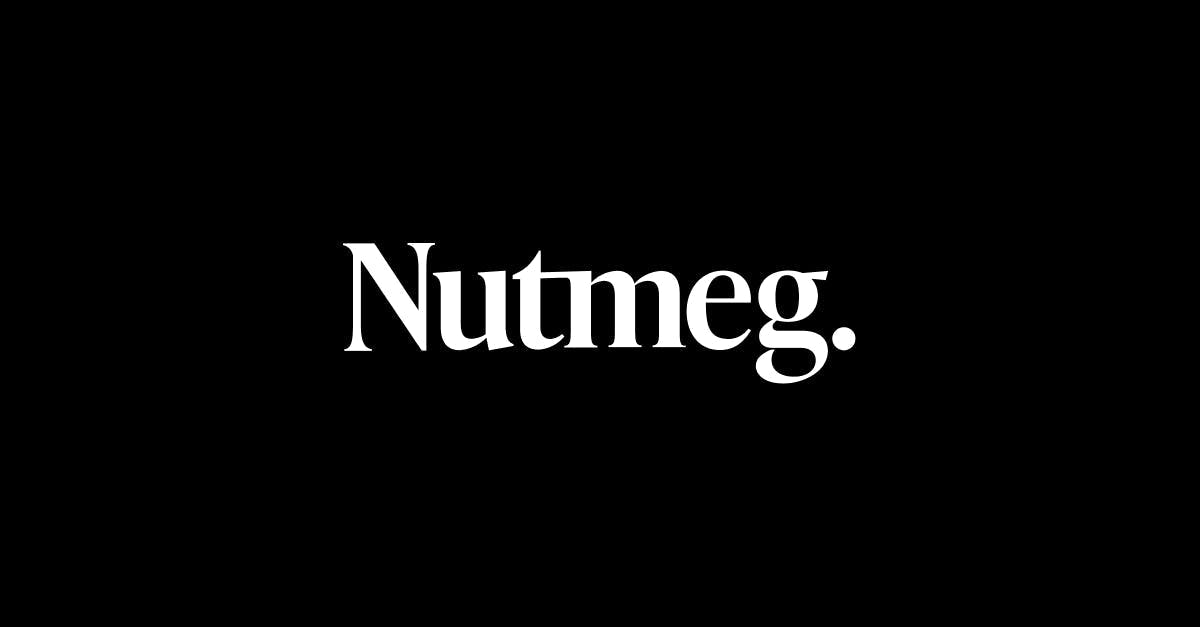The first edition of
ETF Stream
’s webinar series, ETF Ecosystem Unwrapped, took a detailed
look at the record high discounts bond ETFs
experienced during the volatile period of the coronavirus pandemic.
The conversation started with Pasquale Capasso, head of ETF capital markets for southern Europe and LatAm at Invesco, comparing recent performances to those during the Global Financial Crisis in 2008 with the iBoxx Investment Grade Corporate index falling 15.7% peak to trough and did so in 278 days in 2008. In March, the index fell -23.3% in just 14 days.
He explained the prices the bond ETFs were showing during the volatile periods in March were actually correct and the net asset value (NAV) levels were not actually representative of the value of the underlying bonds due to stale pricing.
Christopher Meyers, managing director at Flow Traders, stressed how fixed income ETFs are a unique asset class that enables trading in an underlying underlying asset that lacks liquidity and transparency.
He added the lack of liquidity and transparency in the underlying bond market makes it more complex for market makers when trying to reflect the value of the underlying assets into an ETF price, but the price of the ETF is accurate and up-to-date.
Citing a Citi study, he said: “Out of a universe of more than 21,000 US corporate bonds, only 240 instruments trade every day.”
In March, there was a lag in the NAV price calculated by the ETF issuer’s calculating agent and what investors could trade at an intraday price on an exchange or over the counter (OTC).
The reason for this discrepancy, Meyers said, was because “the bond market is not as liquid and lacks transparency making price discovery difficult when the bonds just do not trade daily. It’s the published NAV that deviates and lags compared to the actual, current price of the basket as reflected in the ETF price”.
Rumi Mahmood, ETF analyst at Nutmeg, argued there is still a misunderstanding regarding ETF premiums/discounts, including for bond ETFs as some of the discounts we have seen have been a result of timing differences.
As an example, he stated, “a long US treasuries ETF had a 4% discount at one point in March which happened because the ETF closes at 4:30pm in London but the underlying continues to trade in the US and rallied 4%. The next morning the ETF in London naturally exhibited a 4% discount” Mahmood continued”.
“When the performance goes up by 4%, the market opens in London and then it is trading at a discount.”
Capasso added: “When you have a premium discount which is technical during periods of market stress, if bond prices do not move and investors do not know what is their real value, they can look at the ETF price as that would be the real price of the basket of bonds it tracks.”
Meyers said the bond market is based on an old school market environment where a small number of dealers have a significant bulk of the business and lawmakers should be promoting non-traditional liquidity providers to be joining the space for transparency and more liquidity.
“The bond market is one of the most archaic environments in the financial industry. It is based on old school market thinking where trading is not as electronic and more based on negotiations.”
Some liquidity providers did not step in during the periods of volatility, however, Mahmood said Nutmeg was still able to complete trades.
“Different participants will act differently in this environment. Some would want to put up capital and some would want to take on risk. Notably, ETF specialist market makers such as Flow Traders were more active” Mahmood continued.
“Despite this, we were still able to trade in large size. For example, we were able to trade £50m out of US corporate bonds at a price of 50bps which we would consider to be reasonable in this stressed environment.”
As a market maker, Meyers concluded by highlighting how bond ETF investors can still trade even if the underlying is not tradeable. For example, when dealers don’t show bids or offers in the underlying bonds.
“In the high yield and investment grade side of the market, a lot of the traditional dealers pulled out of the underlying bond market and did not want to sell any bonds they did not have on the books. However, there were still ETF liquidity providers making markets in the derivatives.”
ETF Stream's next webinar on 6 May will focus on index providers' decision to delay rebalances and what this means for the market. Click here to register now.
Sign up to ETF Stream’s weekly email here





